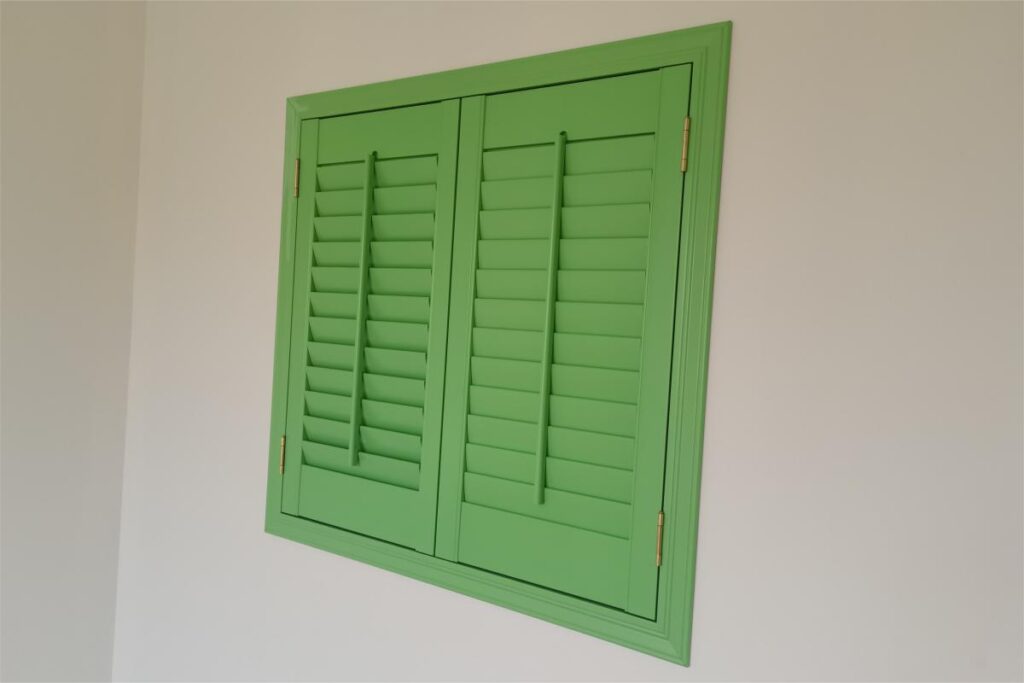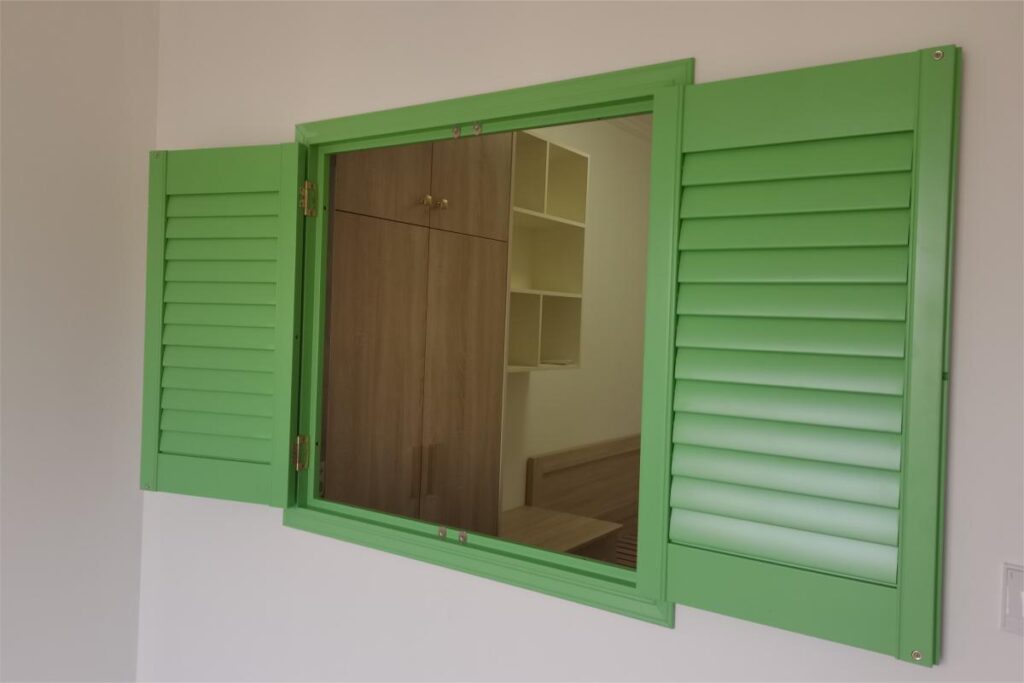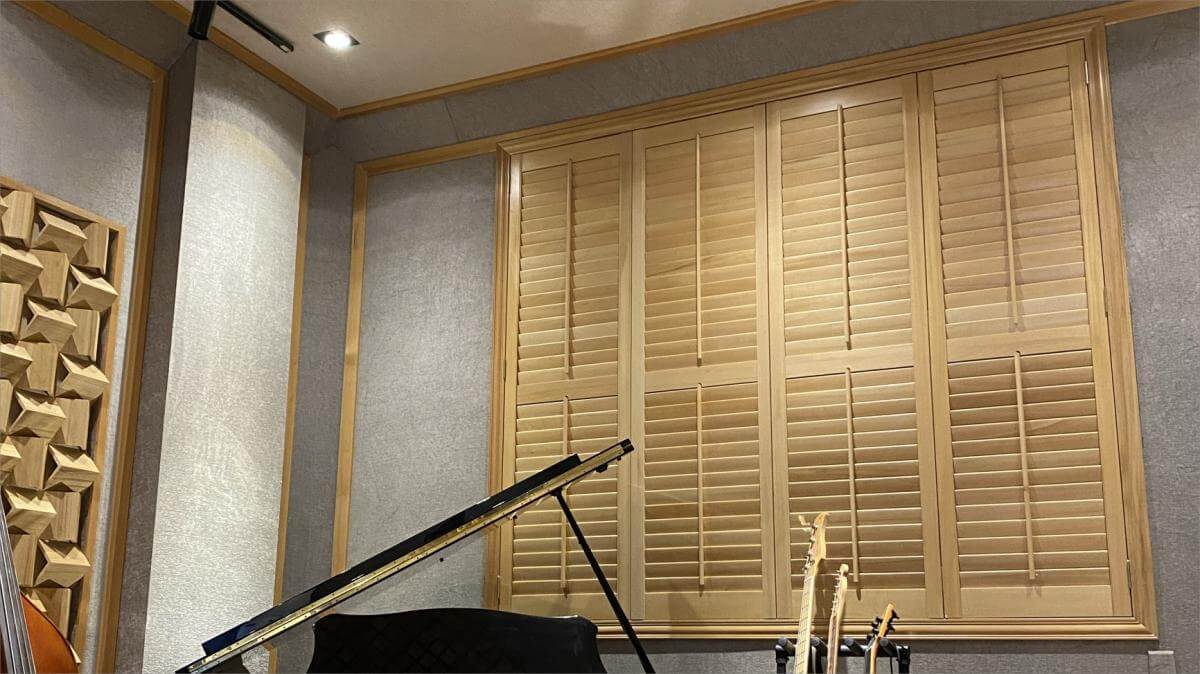Plantation shutters are a type of window treatment that consists of horizontal slats or louvers that can be adjusted to control the amount of light, air, and privacy in a room. Plantation shutters are popular because they are stylish, versatile, and durable. They can enhance the appearance and value of any home, as they come in various materials, colors, sizes, and shapes.
The three main types of plantation shutters are vinyl, faux wood, and real wood. Each type of plantation shutter has its features, benefits, pros, and cons. The cost of plantation shutters also varies depending on the type of material, quality, and installation.
The main purpose of this article is to compare the cost of each type of plantation shutter and help you decide which type of plantation shutter is best for your home, budget, and preference. We will discuss the features, benefits, pros, and cons of each type of plantation shutter in detail. We will also provide some examples of plantation shutter brands and their prices. By the end of this article, you will have a clear idea of which type of plantation shutters suits your needs and expectations.
Vinyl Plantation Shutters Cost
Vinyl plantation shutters are a type of synthetic shutters that are made from vinyl or PVC. They are one of the most affordable and durable options for window treatments.
Vinyl plantation shutters have many features and benefits, such as:
- They are resistant to moisture, heat, and fading, making them suitable for humid or sunny areas, such as bathrooms, kitchens, or coastal regions.
- They are easy to clean and maintain, not requiring painting, staining, or refinishing.
- They are lightweight and flexible, allowing them to fit any window size or shape.
- They are available in various styles, such as solid vinyl, vinyl-clad wood, or hollow vinyl.

The average cost of vinyl plantation shutters is $20 to $25 per square foot, depending on the quality and style of the shutters. The cost may vary based on the number, size, and shape of the windows and the installation and labor fees.
Some examples of vinyl plantation shutter brands and their prices are:
- Eclipse is a brand of solid vinyl shutters made in the USA. They offer a lifetime warranty and a variety of colors and louver sizes. The average cost of Eclipse vinyl shutters is $20 to $22 per square foot.
- Norman is a brand of vinyl-clad wood shutters that are made in China. They offer a 25-year warranty and a range of colors and louver sizes. The average cost of Norman vinyl shutters is $22 to $24 per square foot.
- Hunter Douglas is a brand of hollow vinyl shutters made in Mexico. They offer a 10-year warranty and a limited selection of colors and louver sizes. The average cost of Hunter Douglas vinyl shutters is $24 to $26 per square foot.
The pros and cons of vinyl plantation shutters are:
Pros:
- They are the most economical option
- They are the most durable and resistant option
- They are the easiest to clean and maintain option
Cons:
- They have limited color options compared to other materials
- They may look less natural or elegant than wood or faux wood shutters
- They may have visible seams or joints that can affect the appearance
Faux Wood Plantation Shutters Cost
If you want the look of real wood without the high price tag, faux wood plantation shutters might be your best option. Faux wood plantation shutters are made from synthetic materials that mimic the appearance and texture of natural wood. They are also more moisture, heat, and fading resistant than real wood shutters, making them ideal for humid or sunny areas.
The average cost of faux wood plantation shutters is $15 to $25 per square foot, depending on the quality and finish of the material. Some faux wood shutters are made from vinyl or PVC, while others are made from composite wood or medium-density fiberboard (MDF). Vinyl or PVC shutters are the cheapest and lightest option, but they may have a different warmth and depth than wood. Composite wood or MDF shutters are more expensive and heavier but offer more durability and customization options.

Some of the popular brands of faux wood plantation shutters are:
- Graber offers faux wood shutters in two styles: Lake Forest, which is made from vinyl, and Traditions, which is made from composite wood. Both styles come in various colors, louver sizes, and frame options. The average cost of Graber faux wood shutters is $18 to $22 per square foot.
- Levolor offers faux wood shutters in two styles: Traditional, which is made from vinyl, and NuWood, which is made from composite wood. Both styles come in various colors, louver sizes, and frame options. The average cost of Levolor faux wood shutters is $20 to $24 per square foot.
- Bali offers faux wood shutters in one style: DIY composite shutters made from composite wood. This style comes in various colors, louver sizes, and frame options. The average cost of Bali faux wood shutters is $22 to $26 per square foot.
The pros and cons of faux wood plantation shutters are:
Pros:
- They are more affordable than real wood shutters
- They are more durable and resistant to moisture, heat, and fading than real wood shutters
- They have a realistic wood appearance and texture
- They are easy to clean and maintain
Cons:
- They are heavier than real wood or vinyl shutters
- They may warp or crack under extreme temperatures or humidity
- They have limited color options compared to real wood shutters
- They may not add as much value to your home as real wood shutters
Real Wood Plantation Shutters Cost
If you want the ultimate in natural beauty, warmth, and elegance, real wood plantation shutters are the best choice for you. Real wood plantation shutters are made from solid hardwood, such as basswood, poplar, maple, or oak. They have a rich and authentic wood grain that adds character and charm to any room. They are also the most customizable option, as you can choose from various colors, stains, finishes, and louver sizes.

The average cost of real wood plantation shutters is $25 to $45 per square foot, depending on the type and quality of the wood. Real wood shutters are the most expensive option but offer the highest value and durability. Real wood shutters can last for decades with proper care and maintenance.
Some of the popular brands of real wood plantation shutters are:
- Shuttercraft offers real wood shutters in various styles, including full height, tier-on-tier, cafe style, and shape. They use premium basswood or hardwood for their shutters, which are handcrafted and finished in the UK. The average cost of Shuttercraft real wood shutters is $30 to $40 per square foot.
- Shenandoah offers real wood shutters in various styles, such as traditional, plantation, colonial, and custom. They use premium poplar or basswood for their shutters, which are made in the USA. The average cost of Shenandoah real wood shutters is $35 to $45 per square foot.
- Sunburst offers real wood shutters in various styles, such as classic, studio, reclaimed, and barn doors. They use premium basswood or hardwood for their shutters, which are made in the USA. The average cost of Sunburst real wood shutters is $40 to $50 per square foot.
The pros and cons of real wood plantation shutters are:
Pros:
- They have a natural beauty, warmth, and elegance that enhances any decor
- They are the most customizable option, with a wide range of colors, stains, finishes, and louver sizes
- They offer the highest value and durability, as they can last for decades with proper care and maintenance
- They have excellent insulation and soundproofing properties
Cons:
- They are the most expensive option
- They are susceptible to warping, cracking, fading, or rotting due to moisture or sunlight exposure
- They require more care and maintenance than other materials
- They may not be suitable for humid or sunny areas

In this article, we have compared the cost of three main types of plantation shutters: vinyl, faux wood, and real wood. We have also discussed each variety of shutter’s features, benefits, pros, and cons. The purpose of this article was to help you make an informed decision on which type of plantation shutters is best for your home, budget, and preference.
To choose the best type of plantation shutters for your home, you should consider the following factors:
- The size and shape of your windows
- The style and color of your interior design
- The climate and humidity level of your location
- The amount of light and privacy you want
- The level of maintenance and care you are willing to provide
Based on these factors, you can select the type of plantation shutters that suit your needs and expectations. For example, if you have large or irregular windows, you may opt for real wood shutters, as they are the most customizable option. If you have a modern or minimalist decor, you may prefer vinyl or faux wood shutters, which have a sleek and simple appearance. If you live in a humid or sunny area, you may choose faux wood shutters, as they are more resistant to moisture and fading than real wood shutters.
If you are still trying to decide which type of plantation shutters to choose, you can contact a professional installer for a free quote or visit chinagoodwood.com for more information. Chinagoodwood is a leading manufacturer and supplier of high-quality plantation shutters in China. They offer various plantation shutters in multiple materials, styles, colors, and sizes. They also provide installation and after-sales service for their customers. Chinagoodwood can help you find the perfect plantation shutters for your home at an affordable price. Visit chinagoodwood.com today and get started on your window makeover!

